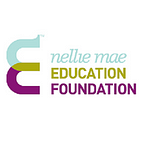Healing and Agency: Restorative Justice at Work (Romeo Romero Sigle Interview Part 2)
We got the chance to talk to Romeo Romero Sigle, Assistant Director of Pa’lante in Holyoke, MA, about the history of the organization, Pa’lante’s current youth-led and anti-racist work, and how the group has adjusted their practices and strategy during COVID-19. This is part two of a four-part blog post about Pa’lante. You can read part one here.
What would you describe is the meaning of restorative justice, and has it/approaches to it changed over time?
The program really came about because in Holyoke we had the fourth highest suspension rate of Latinx students in the entire country. And there became this critique of the traditional discipline system and people were researching alternatives and came upon the idea of restorative justice.
The restorative justice movement was started in the 80’s and 90’s, looking at how to transform criminal justice systems, and it was slowly brought into schools after that. The idea of restorative justice is that rather than punishing people when harm happens, you can bring people together and put together a community to figure out what amends or what care needs to happen. If two students fight for example, and you suspend them, then they come back but nothing is resolved. Whereas if you do a restorative justice process, you can get to the root of the issue — why were you fighting, what do you need to feel safe in the building — and you can repair those things.
And in some situations I think that’s sufficient. But in the last ten years or so this idea of transformative justice also came about, and our program really strives to embody that as well. Transformative justice is more interested in thinking about the conditions that created harm in the first place, often thinking about systems of oppression and what can we do to create a world in which harm doesn’t have to happen the way that it happens currently. So we do both of those things, we offer lots of healthy conflict options for students and we do youth organizing to think about the structures in the school that make it so students are feeling like they need to fight with each other and fight with adults in the building, and take some of it off of the interpersonal and more on the structural.
Can you go deeper into how indigenous circle practice works?
The basis of our program is learning this indigenous circle practice. The idea is the more we get into circle, the more that we embody a way of being that really centers everyone’s humanity, everyone’s dignity, everyone’s sovereignty. We learned this practice from our teacher Dr. Sayra Pinto, who studied with Phil and Harold Gatensby, so we really cherish the heritage and the tradition that we were able to adopt this process from. And I think that the restorative justice movement as a whole has learned a lot from indigenous people, and in some cases has co-opted circle practice in such a way that you can see circle being used as a form of control and punishment, and we don’t believe in that. And it’s really different than most things that happen in school, because you’re sitting in a circle rather than listening to a teacher at the front of the room, and when you have that talking piece, you can’t be policed. It really is a lot about choice and agency and choosing how to heal your own heart with the presence of a loving community.
Can you talk a little bit about the Youth Participatory Action Research Projects?
Every year the students take up what we call a YPAR project, or youth participatory action research. This is where students think about what’s going on in their schools, what kinds of injustices they’ve witnessed, what they might want to put their energy into changing, and then once they choose a topic, they research the problem. And then once they’ve done some research, they decide to take some action to make change. The very first YPAR project we did was around an in-house suspension room that they called the “student support room.” And so students did all of this research about what an actual student support room would look like, and they were able to make a proposal to school leadership to change the whole room. Now you walk in there and there’s art on the wall, and there’s comfy chairs to sit in, and art supplies, an exercise bike, and there’s multiple therapeutic professionals to talk with students about what’s going on for them. And it’s a space that students can access any time in the day, and if they need longer term support, they get connected to what they need. So that’s one example of a YPAR project where students were like “this is a problem and we want something different” and they were able to make that happen. And I was talking a little bit about the random search policy — that was our YPAR project from this year, and the Hidden Legends was our YPAR project from last year.
In our next installment, we dive into the community’s reaction to Pa’lante’s work, how staff members challenge adultism, and the influence of the Young Lords’ legacy on Pa’lante’s work.
Correction: In a previous version of this blog, we were unspecific in our attribution of Dr. Sayra Pinto’s learning of indigenous circle practice. The blog has been updated as of 1/19/22 to credit Phil and Harold Gatensby.
